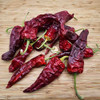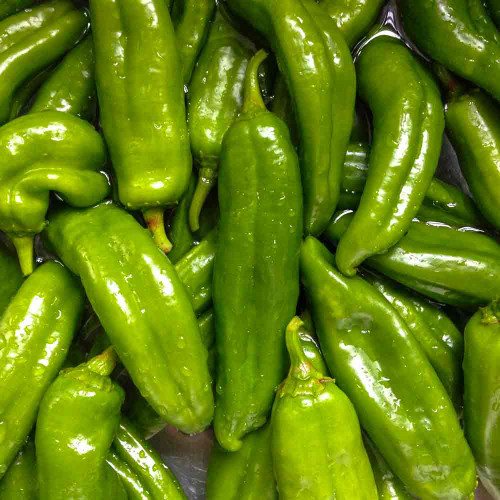Description
Concho Chile – Arizona’s Secret Flavor Treasure
A few miles outside the southernmost Hopi village, an exchange occurred in 1583 that ripples through the centuries to today. The Hopi, a people of ancient traditions, bartered with the Spanish explorer Antonio de Espejo on his expedition across the north of what would become Arizona. Among the blankets, bells, and trinkets exchanged were chile pepper seeds—tiny, unassuming things that held the promise of heat and flavor.
Diego Perez de Luxan, who documented the expedition, mentioned in his journal trading chile seeds with every tribe they encountered. Surprisingly, local oral traditions match the seed trade, which was passed down from the Hopi to the Spanish settlers who arrived later.
In the mid-1800s, Spanish settlers arrived in the area, accustomed to the spices of the New World, and found a unique chile already growing there. The farmers planted the seeds, grew to love them, and a legacy began as they saw something special in this little chile.
Concho was a relatively isolated place, and these unusual plants remained primarily unknown in the outside world. They evolved quietly for generations as farmers picked the crimson peppers, holding the seeds for the next season. Recipes developed alongside the vibrant plants—stews simmered with smoky depth, salsas sparkled with hidden heat.
Our grower rescued this remarkable chile almost 20 years ago when one of his helpers brought a handful of seeds to him. The grower told the story and said the chile hadn’t been grown in a few years.
Today, the Concho Chile carries a taste of the past– of explorers, trade routes, weathered hands, desert resilience, and bountiful land. For you, it's an invitation to write a new chapter in its long story in your garden.
Details
The Concho chile plant is dependably sturdy and adaptable. Its bushy structure reaches a compact 2-3 feet tall, making it ideal for any garden space, from raised beds to containers. The peppers offer a satisfying visual shift, starting as a vibrant green before maturing into a dark crimson red, signaling their readiness for harvest. This color change signals their peak flavor and the warmth they'll bring to your dishes.
However, the most fascinating aspect of the Concho is its cooperative growth habit. Instead of single seeds, the traditional method calls for planting 3-5 seeds together in "pinches" directly into the garden soil instead of starting inside and transplanting seedlings.
As the seedlings emerge, their stems intertwine, creating an essential support system for the developing plant. The support structure is a practical adaptation as they push through the tough desert soil and face the relentless winds – a testament to the Concho's resilience and the ingenuity of generations of farmers who discovered this unique way of planting.
History
Chiles existed as wild, scrappy plants long before they graced our kitchens. Their ancestors were small, berry-like fruits overflowing with fiery heat – a defense mechanism to deter most animals. But birds, unable to taste the burning sensation of capsaicin (the compound behind the chile's heat), became partners, spreading the seeds far and wide.
Researchers have made significant strides in pinpointing the likely "center of domestication" for the genus Capsicum, which includes all our beloved chile peppers.
By comparing genetic markers, they've narrowed the likely origin to the eastern Mexican states of Tamaulipas, Nuevo León, San Luís Potosí, Veracruz, and Hidalgo. This work builds upon earlier discoveries of ancient chile pepper remains found alongside corn and squash in dry caves in Puebla and Tamaulipas.
Initially, these remains were dated indirectly by their association with other plant materials, suggesting they were roughly 9,000-7,000 years old. Scientists continue investigating the genetic relationships between wild and domesticated chile pepper populations, hoping to refine our understanding of this fascinating crop's history further.
From a tiny, wild fruit to the cornerstone of cuisines worldwide, chile's journey is due to our love of flavor and remarkable adaptability.
While most chiles ventured far and wide, the Concho chile stayed close to home. Passed down through the hands of farmers tending their fields, the kitchens filled with the aroma of this unique pepper, and families sharing recipes imbued with its distinctive flavor, it has deep roots in this little corner of northwestern Arizona.
Uses
The Concho chile offers an unexpected duality of flavors. When fresh, it brings a crisp, juicy bite with a building, mellow heat—perfect for adding a vibrant kick to salsas and other fresh dishes. Think of those brick-red flecks scattered through your favorite salsa, adding a burst of color and a delightful surprise for your taste buds. Green Concho chiles were prized in hearty lamb stews, adding a subtle warmth and freshness that complemented the meat's richness.
Sun-drying transforms the fruit, creating a deep, smoky sweetness that adds incredible complexity to stews, enchiladas, and other traditional dishes. In old Concho, dried chiles are the star of a thick, rich sauce. Tomatoes, onions, garlic, and Mexican oregano mingle with the smoky chiles, simmered until it’s a paste-like consistency. This sauce is the heart of traditional Concho cuisine, infusing dishes with a depth and warmth that modern spice blends can’t hope to match. Rehydrate dried peppers for a smoky-sweet hot sauce, chop fresh ones into omelets, or grill them slightly for a delicious addition to creamy dips. It's a pepper that adds a unique and delightful dimension to your cooking and a taste of the Southwest to your kitchen.
Whether fresh or dried, the Concho chile is a treasure that inspires exploration and experimentation in the kitchen.
Companion Planting
Beneficial companions include basil, marigolds, and nasturtiums (they naturally keep pests away). Basil adds a delightful flavor profile to dishes featuring Conchos, while marigolds and nasturtiums act as natural pest deterrents.
Antagonistic plantings include beans and members of the cabbage family. Beans have different nutrient needs and can compete with your Conchos for resources. Members of the cabbage family, like broccoli and cauliflower, can attract unwanted pests that target both plants.
Planting and Growing Tips
Plant in a location that receives at least 8 hours of direct sunlight daily. Unlike many chiles, Conchos thrive when directly sown into warm, damp soil. They can be started inside like regular chiles, but make sure to sow by the pinch to support each other as they grow.
The soil in Concho often has a clay-type crust on the surface, and the wind is a constant companion. By planting 3 to 5 seeds together in pinches, the multiple seedlings help each other push through the crust and resist the wind.
Deep, less frequent watering encourages roots to grow deep, searching for moisture.
Harvest Tips
Keep a few simple tips in mind to get the most out of your Concho chile harvest. Like most produce, Conchos are best when picked in the cool morning hours, ensuring their flavor and texture are at their peak.
The peppers' deep red colors signal that they've reached their full flavor, so start harvesting then. Clip or cut the pepper stem from the plant; don’t tear it off, as this reduces the chile's storage life and can invite disease into the plant.
If you prefer a milder heat, pick some while they're still green.
If you want to dry your Conchos, wait until they're fully red for maximum sugar content, which will transform into that smoky sweetness.
Store fresh Conchos like you would bell peppers—they'll keep for about a week in your refrigerator's crisper drawer.
Learn More
- Growing Peppers 101
- Chile and Pepper Growing Tips
- Grow Better Peppers with Shade
- Fermented Pepper Sauce
- Fermented Chile Paste
From the soil to the seed to the food you eat - we'll help you grow your best garden!
1 Review
-
This is a good chile. Try it!
Back when I was just a kid, in a little town at Lakeside AZ Mom and Dad and my two Brothers, would drive out to Concho AZ and we would get a very big bag of the Concho Chiles. Boy, they were so good. Mom would roast them and peel them and we would eat them. I just love them! I now live in East Troy WI. It was so nice for me to see them here. Now I can grow them. Thank you Terroir Seeds!



















